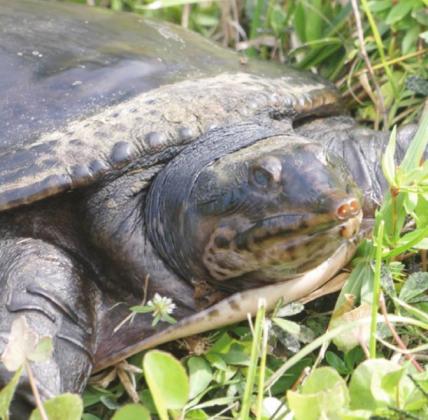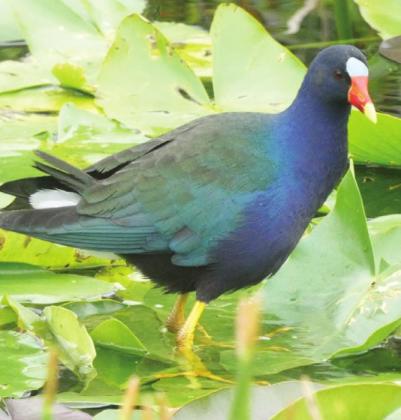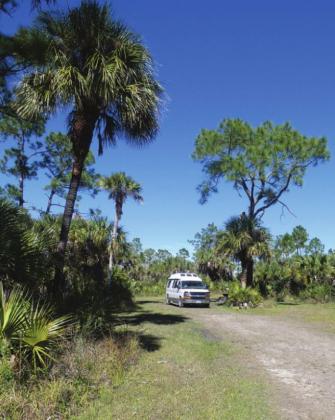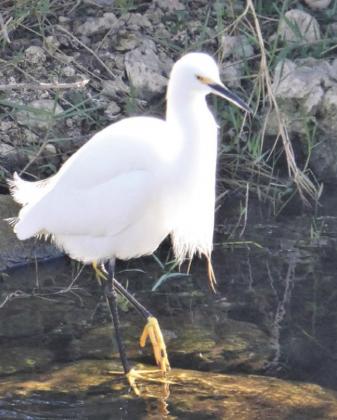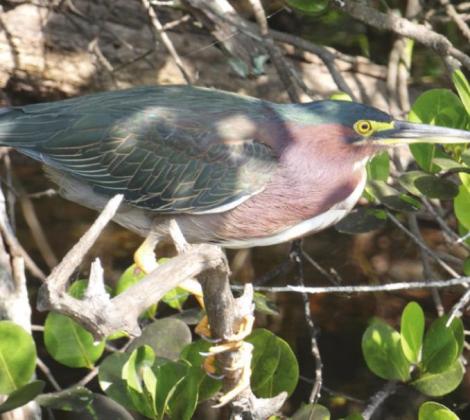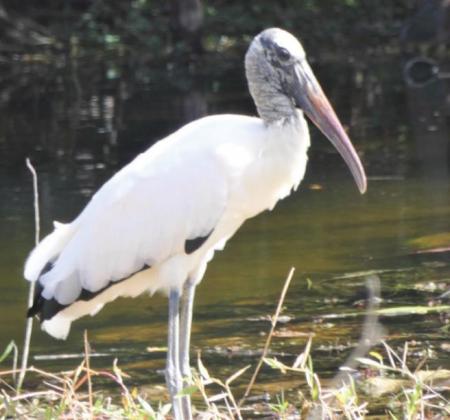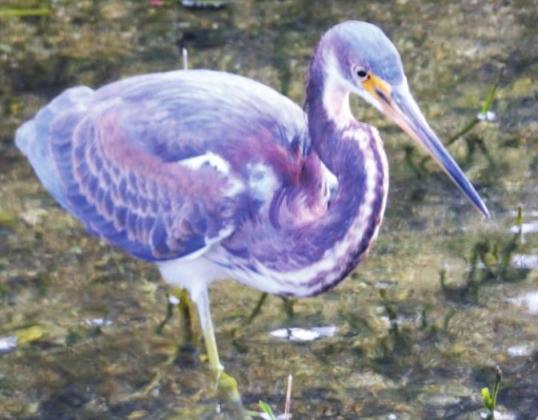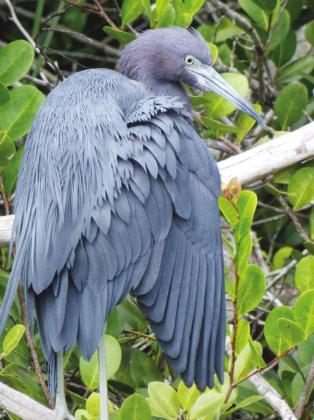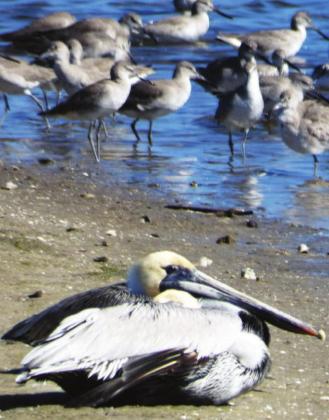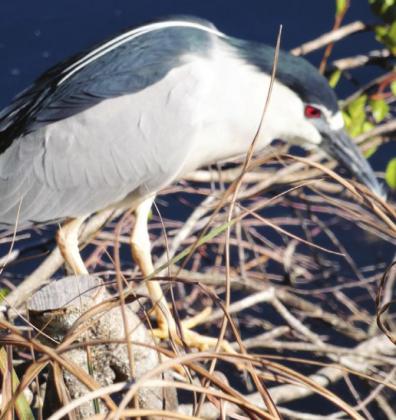LAST MONTH I MENTIONED that Everglades National Park has been undergoing restoration of natural water flow. Florida as we know it today was made possible by draining the swamp. Major cities, resort communities, retirement villages, thousands of acres of vegetables and citrus groves, sugar cane, and huge cattle ranches have prospered—but at significant environmental costs. So, the state and federal governments have spent more than $10 billion putting the water back into the swamp. And still more funds have been allocated. The implications of draining and undraining are far too complex to discuss here.
Besides, this is supposed to be a travel column, so we’ll focus on what that means for visitors to the national park. The most noticeable result is that the water level in Everglades NP is higher with accompanying effects on wildlife. Before restoration, wildlife was forced to concentrate in the relatively limited pockets of deeper water during the winter dry season. From the visitor’s point of view, this was magnificent. A few years ago, animals had to tolerate our presence. Now they have many more options and choose not to hang with us.
Last fall, when Shirley and I started planning a return to Florida, I logged on to the park’s live webcam mounted above the Anhinga Trail. Nothing much was ever going on in Taylor Slough where we were accustomed to seeing cormorants and anhingas building nests in the pond apple trees or feeding their young, gators inviting turtles or fish to lunch, ospreys hovering and diving to snatch a gar. The slough used to be mostly open water. Now it is almost completely covered in the lily pads of spadderdock. We decided to give it a chance anyway.
Our first stop, at Shark Valley on the northern edge of the park, was encouraging. Not what it once was, but there were a few ibises, egrets, and herons. A mama gator had five hatchlings clinging to her back, mewing like newborn kittens. Nearby was a young gator about three feet long.
When we returned to our RV the parking lot was full, there was a lineup from the entrance station all the way back to Tamiami Trail, and a ranger was turning new arrivals around to park along the highway. So, though far from its historic magnificence, huge numbers of visitors were evidently not dissuaded.
The next stop was the Anhinga Trail, one of our all-time favorite walks anywhere in the country. Over the course of several winters in South Florida, we walked it hundreds of times. Really. Hard to believe but no exaggeration. This year Shirley said, “I’m glad we have the memories,” because that is virtually all that is left of the experience. The Wisconsin Hole, where more than two dozen gators used to crawl out to bask in the sun, is now under water. No gators there or elsewhere along the trail. The highlight of our stroll was a chance to see four purple gallinules—Shirley’s favorite bird. No storks, egrets, herons, ibises, spoonbills, ospreys, or… The list of what is no longer there is extensive.
Even so, we were not daunted. Next stop was at the Long Pine Key Campground where we spent many happy winter months. I went to schmooze the woman at the entrance kiosk, pretending that I did not already know a) that all the sites are now reservation-only and b) had all been booked since Thanksgiving. I was struck by the irony. When the place was a world-class destination, there were always campsites available. Now that there is nothing to see, the place is full all the time even though the price is $30 for what we paid $10.
On our way to the end of the 38- mile park road at Flamingo, we paused briefly at old favorites: Pa-hay-okee, Mahogany Hammock, and Paurotis Pond. Keep moving people. Nothing to see here. At Flamingo there was a treat—a couple manatees in the boat basin. At Eco Pond where the trees were once white with birds, nothing but green.
If you happen to be in the Miami area, we would still encourage you to visit the park. We no longer recommend that you drive all that way specifically to see Everglades.
Unless, that is, that you distinguish the national park from the much broader marshy area called Everglades. Just north, along Rt. 41 (Tamiami Trail) is the neighboring Big Cypress National Preserve. It was established in 1974 to protect the natural water flow that is essential to the environment of South Florida. The 729,000 acres had been destined to become the world’s largest jetport with the world’s longest runways. The National Preserve was a new kind of national park in that the swamp and freshwater system are protected but there is still private ownership of homes including villages of Seminole and Miccosukee Indians. In some respects, it is closer to the multi-use designations in national forests than the highly restricted use of national park lands.
The Oasis Visitor Center on Tamiami is a good place to view wildlife. For that matter, just driving along you will see many more gators and birds than in the national park. But the road is two lanes with virtually no shoulders or safe places to pull over. Only the passengers will get much of a view and a pretty limited view at that. Shirley and I make a point of stopping at an art gallery just east of Oasis. The art is impressive and the grounds and the swamp just across the road are good places to see wildlife. There is also a boardwalk at a rest area that can offer pleasant surprises.
We think the best way to recapture the old Florida experience is along the 20-mile gravel road that runs north from Tamiami Trail to Bear Island. Not many tourists go up there, which is why the wildlife viewing is still pretty good. There were gators every few feet, wood storks, ibises, great blue herons, little blue herons, black-crowned night herons, snowy egrets, great egrets, ospreys, pied-billed grebes, ibises galore, plus the ubiquitous black and turkey vultures. And watch your step when you get out to look. Wildlife included a well-fed rattlesnake right by the road. (As regular readers know, I always rely on a woman to kick the snakes out of the way.)
Shirley and I spent seven nights in the campground at the end of the road. It provided the remote, quiet seclusion that we prefer. (Please don’t tell anyone about Bear Island lest it become as hard to get into as any of the national park campgrounds.) By the way, Bear Island is not an island in the Lake Erie sense of the term. Most of South Florida is barely above sea level and is characterized by saw grass prairie. It may look as dry as a field of wheat, but the saw grass roots cling to thin soil under about a foot of water. Some trees, like the bald cypresses, have adapted to the damp condition by learning to breathe through their knees. Scattered pockets of land are high enough to support growth of royal palms, strangler figs, gumbo limbos, and slash pines. These slightly higher areas are known locally as “islands” because they are surrounded by water.
Our next stop, however, was at an island in the conventional sense. Just offshore from Fort Myers is Sanibel, a very popular resort destination with golf courses, condos, hotels and upscale restaurants, and gift shops with clever names. Now, you may be wondering what in the world Shirley and I were doing any place with “upscale” as part of its description. Truth is, she started out upscale but over the years has been corrupted by hanging out with the kind of person her mother tried to warn her against.
The challenge of getting to Bear Island is 20 miles of gravel road with a speed limit of 20 mph. The challenge of getting to Sanibel Island is 20 miles of three-lane paved road where the nominal speed limit is 35 mph but traffic actually moves at somewhat less than 10. And then you reach the bridge and causeway where three lanes funnel down to one lane. Oh, the joy! On the island itself, a high percentage of the traffic is in the bike lane because two wheels move way faster than four. For that matter, pedestrians do too.
So, you are asking, what are people who value quiet seclusion doing on Sanibel Island? We blame it on the seemingly nice woman from Virginia who was commiserating with us about the decline of wildlife in Everglades NP. She insisted things were still pretty good at J. N. “Ding” Darling National Wildlife Refuge on Sanibel. She was right. Sorta. Sanibel,
She was right. Sorta. Sanibel, as a Gulf Island, is marine habitat rather than freshwater habitat. The shoreline is edged with mangroves where they have not been removed for resorty purposes. In addition to all the birds we associate with Everglades NP and Big Cypress Preserve, there were both white and brown pelicans and shorebirds such as sandpipers and willets. Ibises, in particular, were there in significant numbers. It was common to find several species feeding close to each other: little blue herons with roseate spoonbills and egrets, for example. But not close to people. So, the rule still applies: unless absolutely forced to hang out with us, the birds prefer not to. If you are inclined to visit Sanibel, after your obligatory purchases at She Sells Sea Shells, take the four-mile drive through “Ding” Darling with your binoculars and/or longest camera lens.
There are places to park along the way and clearings in the mangroves through which you can view the birds. Wildlife Drive is also popular with bicyclists who tend to travel in packs at a rate that suggests that they are not dedicated birders. My guess is that most cyclists are locals who have seen it all before and don’t feel obligated to look at it again. Speaking of locals, a volunteer at the visitor center said that the population of Sanibel Island in the summer is about 20,000 but in winter it is about 200,000. It is a good thing that most visitors to Sanibel are more interested in golf than birds. Even so, most golfers are willing to settle for a birdie when they can get it.
Geezers are notorious for saying that everything was way better back in the day. Generally speaking, that is true. Specifically speaking, it is also true. At least 82.37% of the time according to a peer-reviewed study I read somewhere online. For Shirley and me, even though it is more challenging in recent years, a visit to the swamp can still be just a walk in the park.
LeMoyne Mercer is the travel editor for Healthy Living News. If you are thinking about a trip, you might want to see more destinations worth visiting on AnotherWalkinthePark.blogspot.com. And you should do that before all those places join the ranks of “they ain’t what they used to be.”

